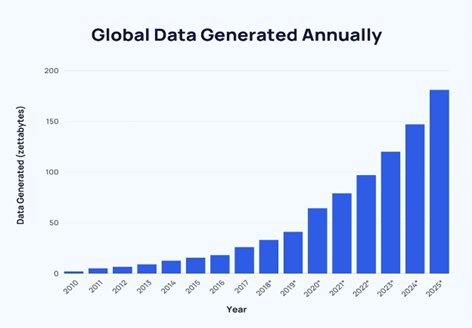In the shifting world of data analytics, change is the only constant. From population shifts to evolving market trends, data is in perpetual motion. But how do you make sense of it all? In this article, we’ll explore the vital importance of adapting to changing data landscapes and showcase how our firm excels at managing the details. We’ll illustrate this with a real-life example of how a seemingly surprising 25% increase in an aging town’s population, coupled with a 15% decrease in another town, was revealed to be a result of a merger of CSDs and CMAs.
Why Should You Care?
The Data Evolution: Understanding the nuances of data transformation is crucial in a wide range of industries, from urban planning and healthcare to marketing and finance. It ensures that decisions are grounded, rather than outdated information.

What We’ll Cover
In this article, we’ll delve into the following key aspects:
1. The Challenge of Changing Data in the Canadian Census: We’ll explain why data is not static and why it’s essential to adapt to shifting data landscapes.
2. A Real-Life Example: We’ll present a real case where our firm uncovered the truth behind seemingly puzzling population statistics.
3. How We Handle Data Changes: We’ll provide insights into our approach to managing data transformations, ensuring that our clients receive accurate and actionable insights.
The Challenge of Changing Data in the Canadian Census
In the intricate world of data analytics, few challenges are as dynamic and impactful as the constant transformation of data sources like Canadian Census Subdivisions (CSDs) and Census Metropolitan Areas (CMAs). Much like tides in a vast and ever-shifting ocean, these changes can significantly impact data reliability, relevance, and interpretation. In this section, we’ll explore the specific challenge posed by the evolution of CSDs and CMAs within the Canadian Census context and how our firm meets this challenge head-on.
The Dynamics of Changing CSDs and CMAs
As mentioned in our previous blog post, CSDs and CMAs are changing as defined by Statistics Canada in the Canadian Census. These areas are integral to understanding the country’s demographic, economic, and geographic landscape. However, they are not static entities; they evolve over time due to a multitude of factors:
· Population Growth and Urbanization: As populations grow and urban areas expand, new CMAs and CSDs may be designated, while existing ones may undergo boundary adjustments.
· Economic Development: Changes in economic activity, such as the growth of a particular industry, can lead to the creation of new CMAs or the expansion of existing ones.
· Administrative Decisions: Government decisions, including municipal amalgamations or the reorganization of administrative divisions, can lead to changes in CSDs and CMAs.
The Implications of Changing CSDs and CMAs
These changes in CSDs and CMAs can have profound implications for data analysis and decision-making:
· Data Consistency: Changes in CSDs and CMAs can disrupt the consistency of historical data. This makes it challenging to perform accurate trend analyses and draw meaningful comparisons over time.
· Spatial Analysis: The accuracy of spatial analyses, such as geographic clustering or regional trends, is highly dependent on the accuracy and currency of CSD and CMA definitions.
· Resource Allocation: Government agencies, businesses, and organizations rely on census data for resource allocation and service planning. Changes in CSDs and CMAs can affect these processes.
A Real-Life Example: Unraveling Population Mysteries
One of our recent clients was shocked to discover a 27% increase in population in an aging town, while another town experienced a 15% decrease in population. The client was perplexed – what could be causing such a drastic difference in population trends? That’s when our team stepped in to investigate and provide insight.
Upon further analysis, our experts found that the CMA in question, Windsor, had added three CSDs, Essex, Kingsville and Leamington to its population count which ballooned from the 2016 five-year projection of 338,659 to Manifold’s estimate of 446,262 in 2022. Our team was able to identify this trend by analyzing proprietary datasets, census data, and other relevant sources. We then created a comprehensive report detailing the demographic shift and its impact on the local community.
City of Windsor

Municipality of Leamington

How We Handle Data Changes
1. Data Scrutiny: We meticulously analyze data for anomalies and inconsistencies, such as sudden population spikes or drops.
2. Context Matters: We dig deeper to understand the context behind the numbers. In our example, recognizing the town merger was crucial to explaining the data.
3. Adapt and Communicate: We adapt our analytics approach to accommodate changing data landscapes and communicate these changes effectively to our clients.
At our firm, we recognize that each client has unique needs and faces distinct challenges. That’s why we offer tailored solutions designed to address specific concerns and capitalize on emerging opportunities. Whether it’s population growth, migration patterns, or economic trends, we have the expertise and resources to stay ahead of the curve.
Our team of data analysts, researchers, and strategists work tirelessly to monitor changes in the data space, identifying patterns and trends that may impact our clients. We leverage cutting-edge tools and techniques to process large datasets, identify anomalies, and extract valuable insights. By doing so, we empower our clients to make informed decisions that drive success.
Advice for Navigating Changing Data
1. Stay Informed: Keep abreast of developments in your data domain, whether it’s demographics, market trends, or healthcare statistics. Our Manifold Data Sets and Polaris Intelligence Platform are always up to date with the latest changes.
2. Be Critical: Don’t take data at face value. Always question and seek to understand the story behind the numbers. Our Client Associate Team is always available to help you ask the right questions about your data.
3. Flexibility: Be prepared to adapt your strategies based on evolving data. Rigidity can lead to missed opportunities or misguided decisions.
In the realm of data analytics, the ability to navigate changing data landscapes is paramount. By embracing adaptability and a keen eye for detail, our firm ensures that our clients receive accurate insights that drive informed decisions.
Are you facing data challenges in your industry? Read our blog to explore more topics and reach out to our experts for guidance and solutions tailored to your specific needs. Our Manifold Data Products and Polaris Intelligence Platform are comprehensive and up to date with the latest industry changes. Stay agile, embrace change, and let data be your guiding light in the ever-evolving world of analytics.
